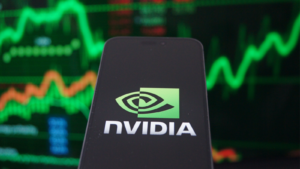There are some doomed tech stocks to sell amid the broader indices, like the Nasdaq, heading lower. These companies face a myriad of challenges that make them risky investments.
Investors need to reevaluate their portfolios and identify companies with fundamental issues that may not weather the storm of what could be a dicey bear market sometime in the middle of this year.
So, here are some doomed tech stocks that investors should consider removing from their portfolios.
Snap (SNAP)

Snap (NYSE:SNAP) has been recommended as a sell here before on InvestorPlace due to its significant cash burn and a substantial net loss reported in the third quarter of 2023. The revenue growth rate was modest at 5% year-over-year, which is considered inadequate given the company’s valuation and ongoing struggle to narrow net losses.
I feel there are some serious problems at SNAP, making it one of those doomed tech stocks to sell. Namely, the company has faced criticism for its high reliance on stock-based compensation and the intense competition it faces from other social media platforms like TikTok.
Another issue is that SNAP fired around 10% of its workforce in recent months. Surely, a large part of the reason is due to the company burning through millions in cash within the last 12 months.
Due to these reasons and more, SNAP is rated as a Hold by Wall Street. It should also be noted that this recommendation comes with a 24% predicted decrease in its stock price, making holding the stock questionable and much more of a Sell.
Chegg (CHGG)

Chegg (NYSE:CHGG) has faced significant challenges due to the rise of generative AI applications like ChatGPT. So far, its plan to add value in areas these tools cannot have proven unsatisfactory to my tastes.
CHGG is also diving headfirst into AI, by necessity, and its impact has hurt the company. Its topline last year faced a 7% year-over-year decline in total net revenues, coming in at $716.3 million.
The company is attempting to pivot fast, but I remain skeptical it will be able to pivot fast enough and provide enough value to users that they can’t already from the expansive use cases of LLMs. That is further reflected in its $34.2 million impairment charge in 2023 for the restructuring of its business, and a 6% year-over-year decrease in subscription services subscribers to 7.7 million.
CHGG was never meant to be a company that leaned so heavily on AI. But it’s now being dragged into this industry in a do-or-die scenario that could end tragically. Also, due to being taken out of its comfort zone, there are increased execution risks for CHGG to redefine its business model to stop the churn of its subscribers. So far, that’s looking like an unsuccessful effort.
Nvidia (NVDA)

Nvidia (NASDAQ:NVDA) has many forks in the fire for delivering growth to investors, ranging from AI to quantum computing, and blockchain. The company seemingly does it all.
But at some point, as with all companies, there comes a point where the company’s valuation becomes too much to handle. The company has a $1.65 trillion market cap at the time of writing and it’s expected to reach $95.30 billion in revenues with an EBITDA margin of around 50%.
Granted, those earnings and revenue multiples are some of the best in the Magnificent 7, but for it to have a $1.65 trillion cap means investors are also pricing in a very long time horizon of growth for that valuation to make sense. Investors are valuing Nvidia at roughly 18 times its expected revenues. So, the question is: Is NVDA’s revenue growth rate going to continue like this in the future?
Given that we’re at the very earliest stages of the AI revolution, and thus most susceptible to hype, I think it’s reasonable to say those expectations are quite optimistic. I compare today’s bullishness on AI to 2020’s love for all things blockchain, speculating that Bitcoin (BTC-USD) would replace central banks.
As far as I can see, institutions aren’t going anywhere, but in the far future perhaps that idea may be feasible.
On the date of publication, Matthew Farley did not hold (either directly or indirectly) any positions in the securities mentioned in this article. The opinions expressed are those of the writer, subject to the InvestorPlace.com Publishing Guidelines.

